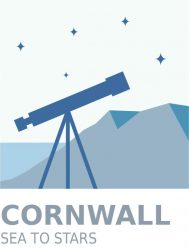Stars to look out for:
The Summer Triangle: The three bright stars of the Summer Triangle are dominant now just to the east of centre. They are:
- Vega in Lyra, The Harp;
- Deneb in Cygnus The Swan;
- Altair in Aquila The Eagle.
They become easier to spot as the summer goes through.into autumn.
The Plough and onward down! It is well known that if you extend the curve of the handle of the Plough down towards the horizon you come to bright star called Arcturus – on again and close to the horizon is bright white star Spica in Virgo. Look along the horizon towards the south and red star Antares becomes obvious. Then there is a star rarely noted Formalhaut. This is really an intruder from the southern skies so nice to see. We of course get the best views of it in the UK due to our Southerly location. By this time everyone will have noticed that is gets dark much earlier than June, however it is still pretty warm.
Solar System
The Sun is getting active now with a lot of Sun spots. The best way to observe the Sun is via www.spaceweather.com – it will even give you alerts when something special is occurring. The 23rd of the month marks the Equinox – when the length of day and night are equal. If you want to step back in time nip smartly up to the Hurlers at 7.00pm BST (6.00pm GMT), the Sun will be setting behind a small tor when viewed from well south of Stow Hill. This has been a marker for autumn since the Bronze Age.
The Moon:
- First Quarter – 3rd September
- Full Moon – 10th September
- Last Quarter – 17th September
- New Moon – 25th September.
The Full Moon in September is known as the Harvest Moon in the US and UK. This Full Moon rises at a similar time for several consecutive days. This allows farmers more time to get the harvest home.
The Planets: The naked eye planets are now to be seen before midnight, Saturn as soon as it gets dark enough, followed by Jupiter is at its closest to Earth on the26th. Mars is in Aries and can be seen in the early hours. .Most people will not have seen Uranus but this month it is very easy because on the 14th – start looking at 10.15pm. Just to the East of the lit side of the Moon there will be a tiny blue-green disc. This will suddenly vanish as the Moon passes in front of it for about an hour! This is a very rare event.
Sky at Night;- The programme focuses on photography of the night sky.
Times: BBC Four on 12th Sept @ 10.00pm, repeated on BBC Four on 15th Sept @ (tbc), then on iPlayer. Check The Sky at Night for the latest updates.
Roseland Observatory is on line www.roselandobservatory.co.uk and also on www.Facebook.com/roselandobservatory


